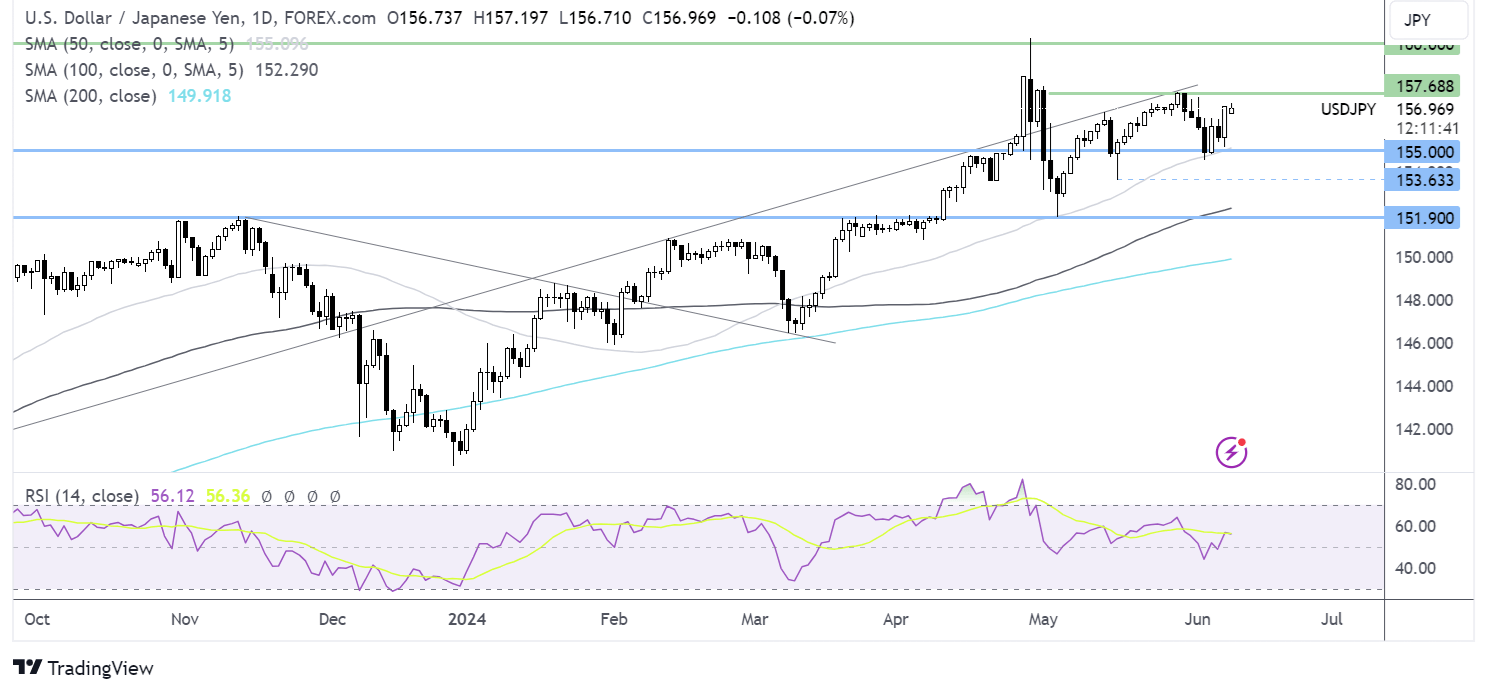
DAX falls on political uncertainty
- Euro-sceptic parties performed well in EU Union elections
- French President Macron called a snap election
- DAX trades in a consolidation pattern
The DAX is falling but is holding up better than some of its European peers, such as the French CaC, as investors digest the results from European parliamentary elections.
Eurosceptic far-right parties performed well, and Chancellor Sholze's Social Democrats fell to third place behind the far-right Alternative for Germany.
Meanwhile, in France, President Emmanuel Macron surprised the markets by calling for snap elections after Marine Le Pen's hard-right National Rally party won more than 30% of the votes. French banks were bearing the brunt of the news, with BNP and Société Générale among the largest decliners.
Stocks suffered a double blow as election worries combined with concerns that the Federal Reserve may not cut interest rates anytime soon.
The hotter the following stronger-than-expected U.S. jobs report on Friday has seen the market rein in Federal Reserve rate cut expectations. Meanwhile, in Europe, the ECB cut interest rates last week but refused to commit to further rate cuts and upwardly revised its inflation forecasts.
Over the weekend, ECB President Robert Holzman voiced caution on further rate cuts. The head of the Austrian central bank said the bank would be looking to avoid putting itself in a corner and did not want to comment on the future path for rate cuts.
DAX forecast – technical analysis
The DAX continues to consolidate between 18634, the April high, and 18360, last week’s low. The RSI is neutral, giving away few clues while investors look for a breakout trade.
Sellers will look to take 18360 to extend losses towards 18000, the round number, and 17800, the May low.
Meanwhile, buyers will need a rise above 18648 to extend gains towards 18450, last week’s high, and 18928, the ATH.

USD/JPY rises to 157 as Fed rate cut bets ease
USD/JPY is rising, extending gains from last week as investors rein in US fed rate cut expectations after Friday's stronger-than-expected US non-farm payroll report and ahead of this week's Federal Reserve meeting.
Friday’s non-farm payroll report smashed forecasts and highlighted strength in the US jobs market, resulting in investors reining in rate cut expectations. The market now sees less than a 50% probability of the Federal Reserve cutting interest rates in September ahead of this week’s meeting.
Wednesday's FOMC meeting will come just hours after US inflation data, which investors will be watching closely. A hotter-than-expected CPI could create panic in the markets and ahead of the Fed meeting.
The Fed is not expected to cut rates in this meeting, so attention will be focused on the guidance surrounding the likelihood of a September rate cut and new staff projections. Policymakers may struggle to maintain three rate cuts on the dot plot, resulting in a more hawkish meeting.
The Japanese yen is falling despite a slight upward revision to Japanese GDP, which showed a contraction of -1.8% in Q1, up from -2 % in the preliminary reading, as capital investment was stronger than expected. Still, the data is unlikely to fuel a rate hike from the Bank of Japan in this week’s meeting.
The yen could find losses re-capped owing to safe-haven demand in the risk-off environment.
USD/JPY forecast – technical analysis
USD/JPY has recovered from 155 and charged higher, bringing 156.70, last week’s high, into focus. Buyers, supported by the RSI above 50, could look to break above this resistance to bring 158.00, the May high, into play.
On the downside, strong support is seen at 155.00, the round number. A break below here opens the door to 153.60, the mid-May low, ahead of 152.00.






